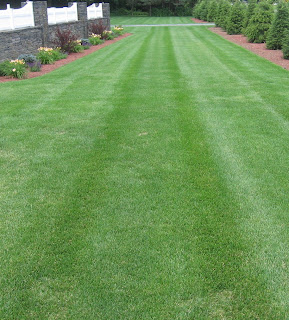Can’t tell where your daylilies end and your neighbor’s begin? Fall is a great time to begin dividing the perennials in your garden. If you find your plants are outgrowing your space this is a great time to spread their beauty in a space where they belong. Any plant that has grown over it’s allotted space is a good candidate for division.
Perennials will grow in widening clumps; after several seasons of growth you may find that your original plant has now tripled in size. After several seasons of growing the centers of the plant begin to die out and soon your full plant has turned into a ring of growth.
 If you plan on dividing your perennials, the first thing you can do to help this transition is to feed it plenty of water, preferably the day before it will be divided. Disrupting the root system can increase the risk of dehydration to the plant. Watering beforehand insures the roots are watered and well fed. Also, having the new location ready is best for the plant. Having little transition time is beneficial for the root system. The hot sun and a good breeze could dry the roots quickly.
If you plan on dividing your perennials, the first thing you can do to help this transition is to feed it plenty of water, preferably the day before it will be divided. Disrupting the root system can increase the risk of dehydration to the plant. Watering beforehand insures the roots are watered and well fed. Also, having the new location ready is best for the plant. Having little transition time is beneficial for the root system. The hot sun and a good breeze could dry the roots quickly.
With a shovel or pitch fork divide the plant, including the roots (you will hear the roots breaking). Transfer the new perennial to its allotted location. Make sure to treat this new plant as a seedling, giving it plenty of water and keeping it well watered until new growth appears.
Perennials will continue to grow in clumps. Keep them healthy and looking good by dividing them when necessary. When you run out of room in your own garden you can offer them to a friend! As always, if you have any questions please let us know. Enjoy!

